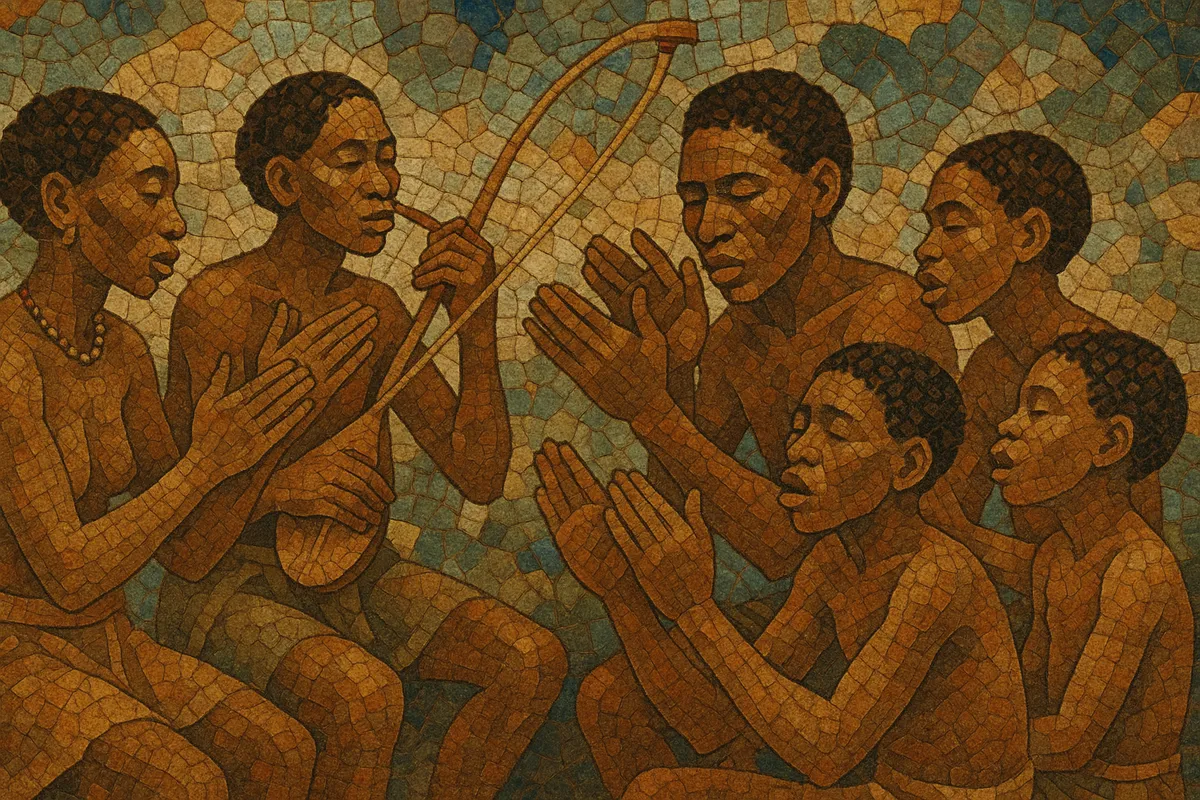Khoisan folk music refers to the traditional musical practices of the San (Bushmen) and Khoikhoi (Nama and related communities) of southern Africa.
It is characterized by cyclical song forms, interlocking vocal parts, dense handclap polyrhythms, and distinctive vocal techniques that include yodel-like register shifts and hocketing. Instruments are sparse and portable: musical bows (mouth-resonated bows such as the gora) and simple idiophones accompany songs, while stamping and clapping often provide the core rhythmic drive. Lyrics mix meaningful text with vocables and onomatopoeia, reflecting the close link between music, language (including click consonants), and environment.
Music is integral to social life, healing trance-dances (n/um), storytelling, children’s games, and rites of passage. The sound is intimate yet powerful, emphasizing communal participation, entrainment, and trance states over harmonic development or large instrumental forces.
Khoisan folk music predates written history and is among the oldest continuously practiced musical traditions in the world. It evolved within small, mobile communities where music served practical and spiritual roles: coordinating work, teaching, social bonding, and healing (notably the n/um trance-dance).
The sonic core is vocal: overlapping ostinatos, call-and-response, and hocketed textures create a shimmering polyphony. Handclaps and foot-stomping articulate cyclical meters (often felt in 12/8 or additive grooves). The musical bow (e.g., the Khoikhoi/Nama gora, a mouth-resonated string bow) provides a droning, overtone-rich accompaniment; other early or adapted instruments include simple rattles and, later, the ramkie (a homemade guitar adopted through contact with settlers).
From the 17th century onward, colonial expansion, displacement, and cultural pressure altered musical life—yet songs persisted in healing, storytelling, and play. In the 20th century, ethnomusicologists and recordists (e.g., on archives and labels like the International Library of African Music and Smithsonian Folkways) documented Ju|'hoansi, !Xóõ (Taa), Nama, Naro, Hai||om, and Khwe repertoires, preserving forms that might otherwise have been lost.
Today, community ensembles, cultural centers, and schools in Namibia, Botswana, and South Africa sustain and teach Khoisan songs and dances. Performances appear at festivals and museums, and collaborations with contemporary artists and researchers highlight the music’s intricate rhythm, timbre, and social meaning.


